
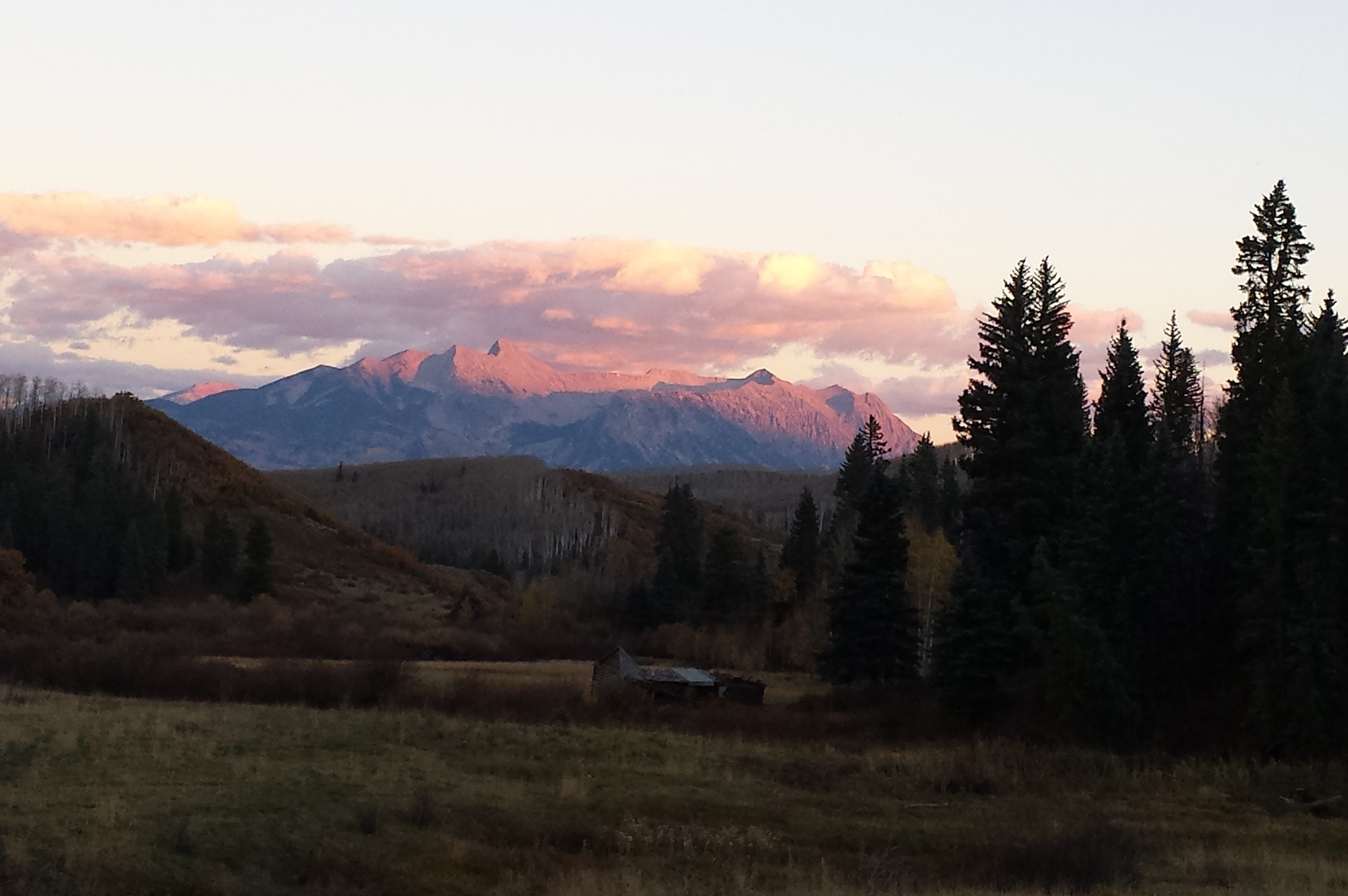
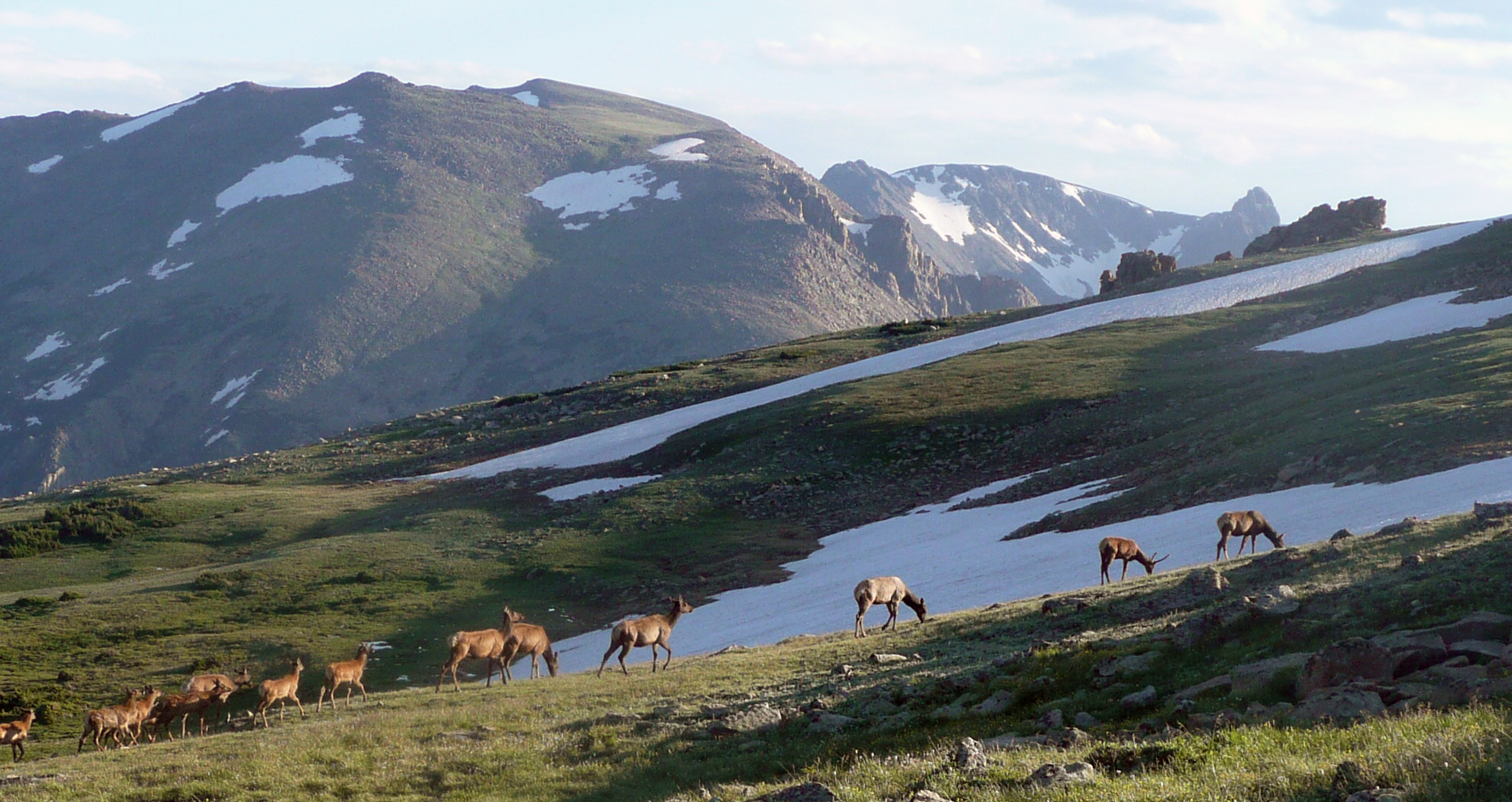
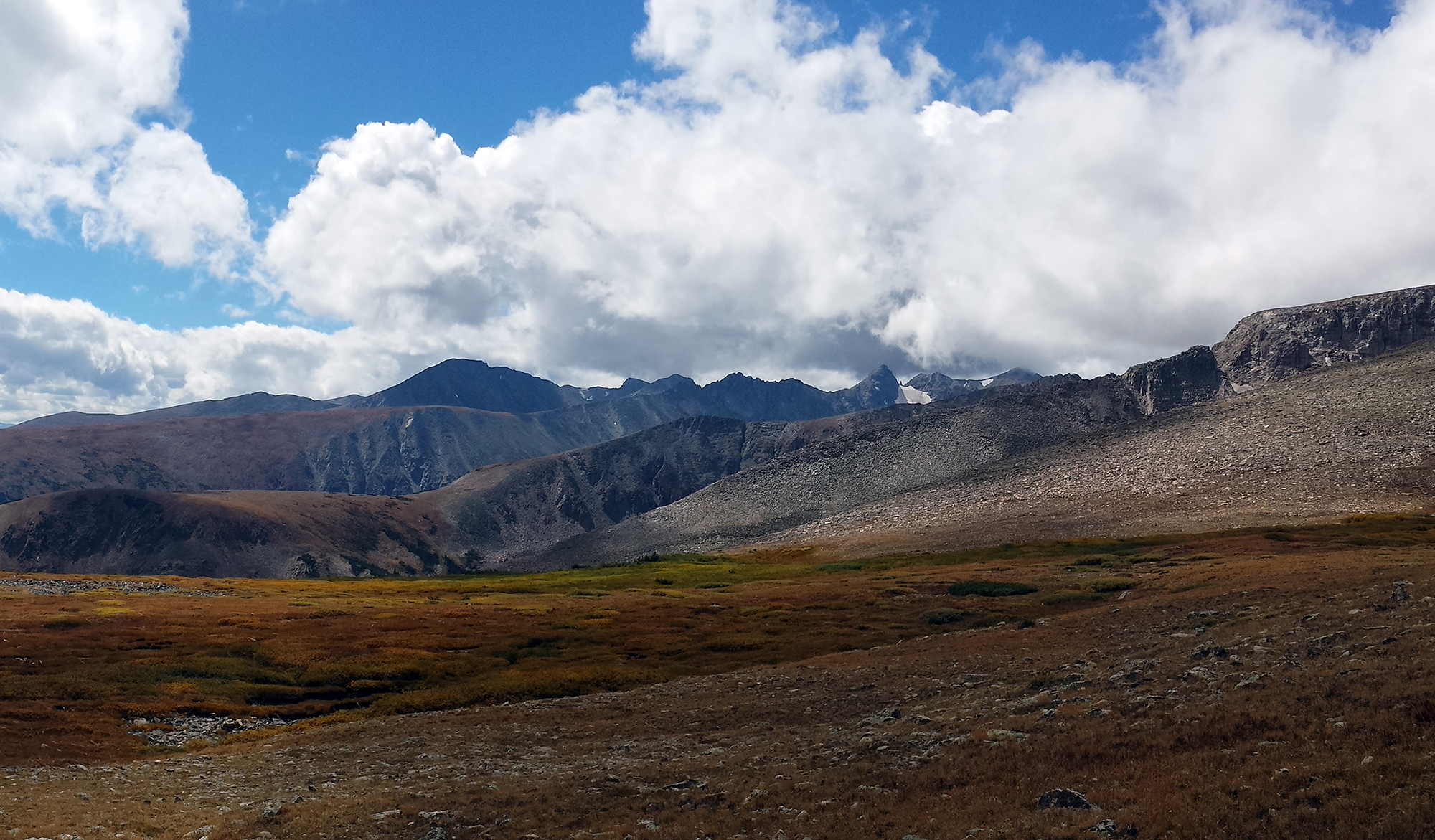
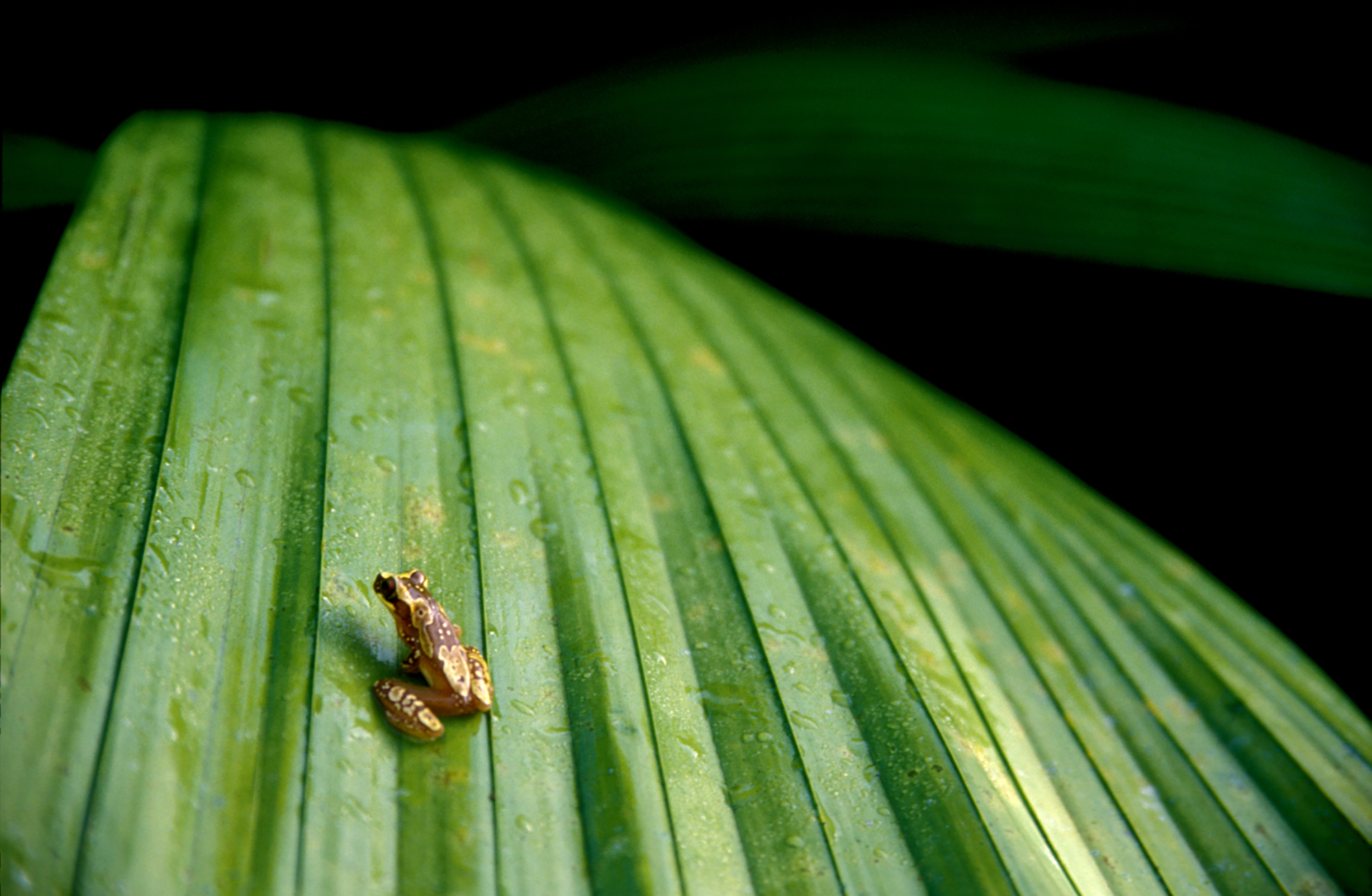
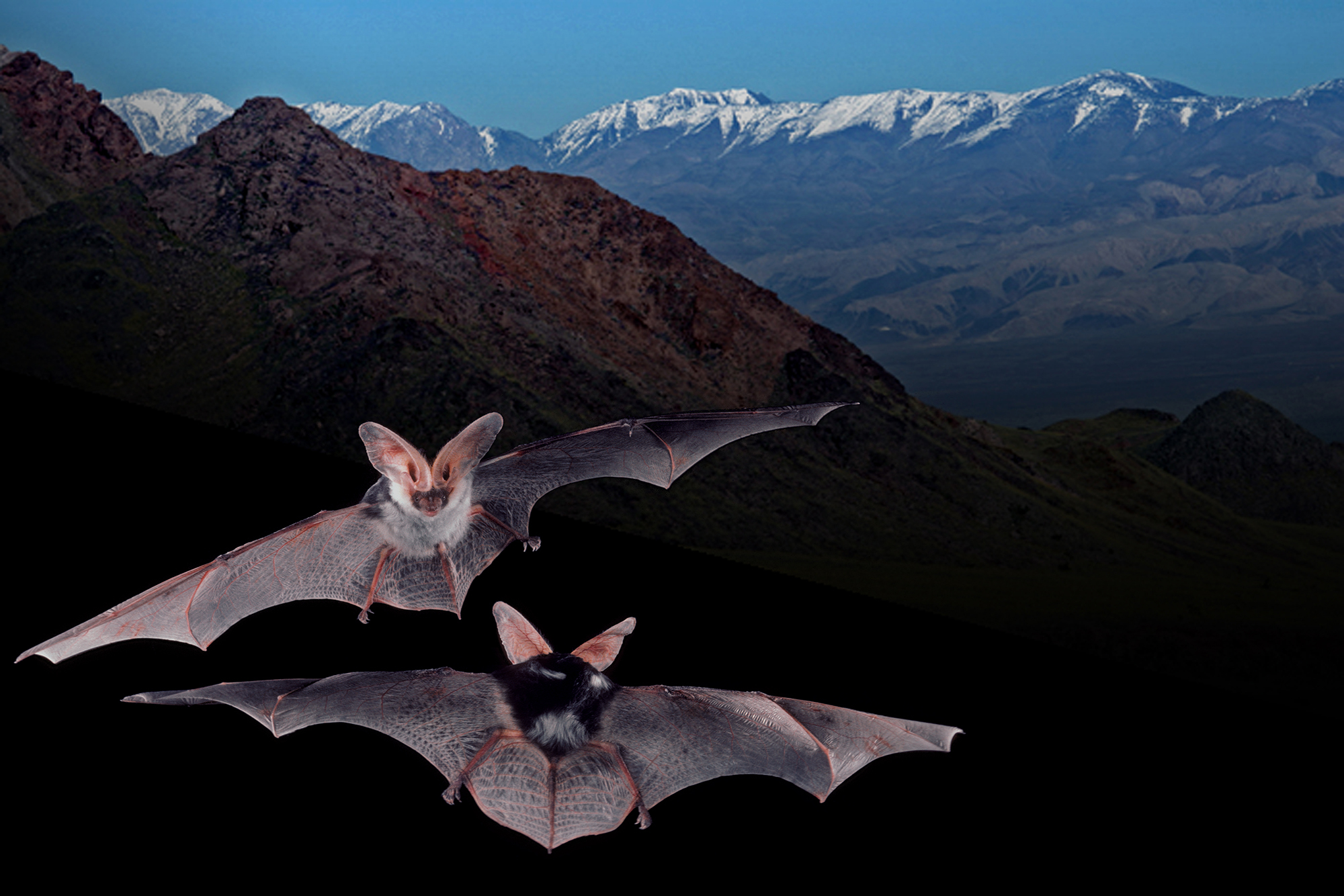
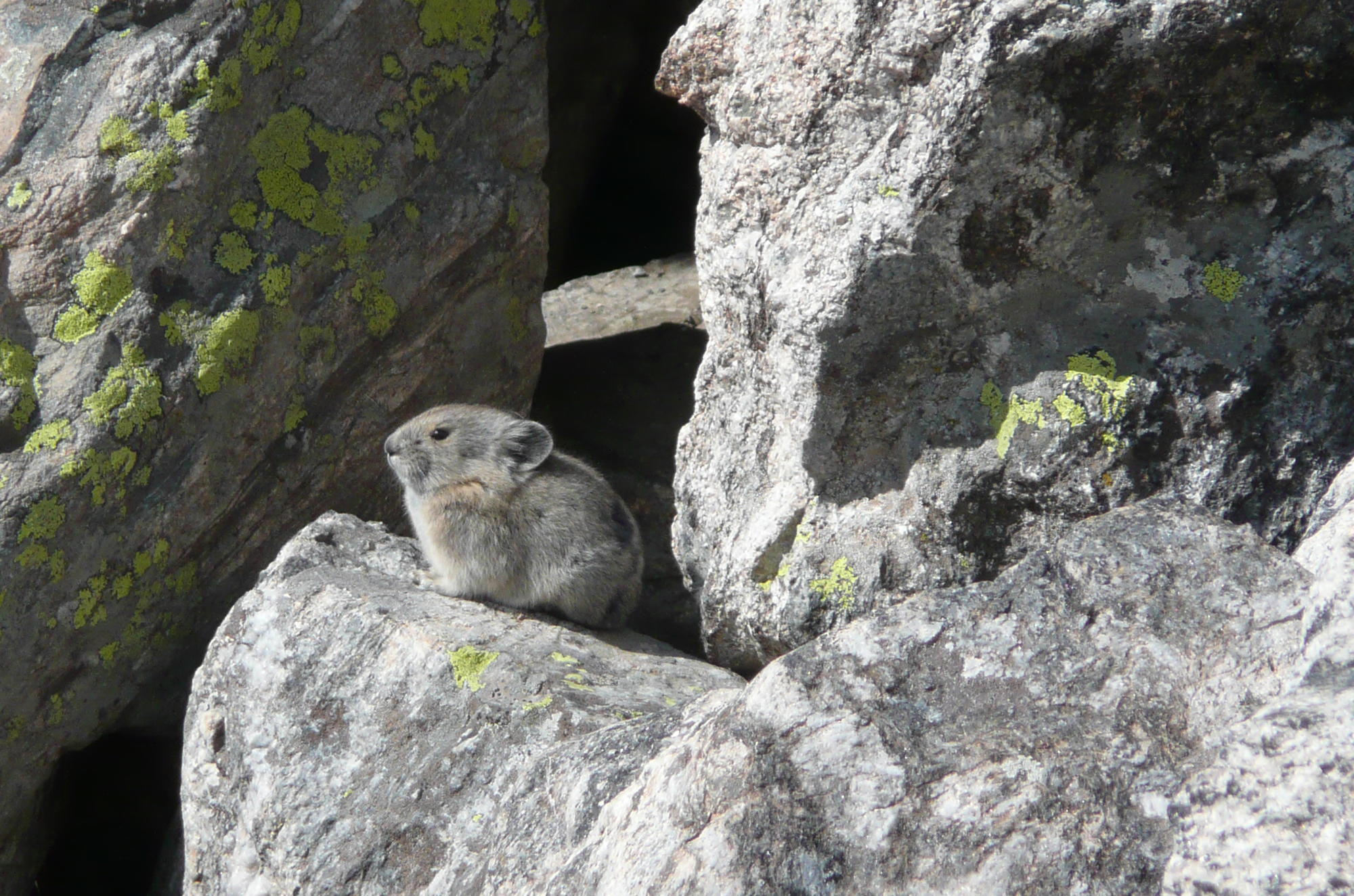
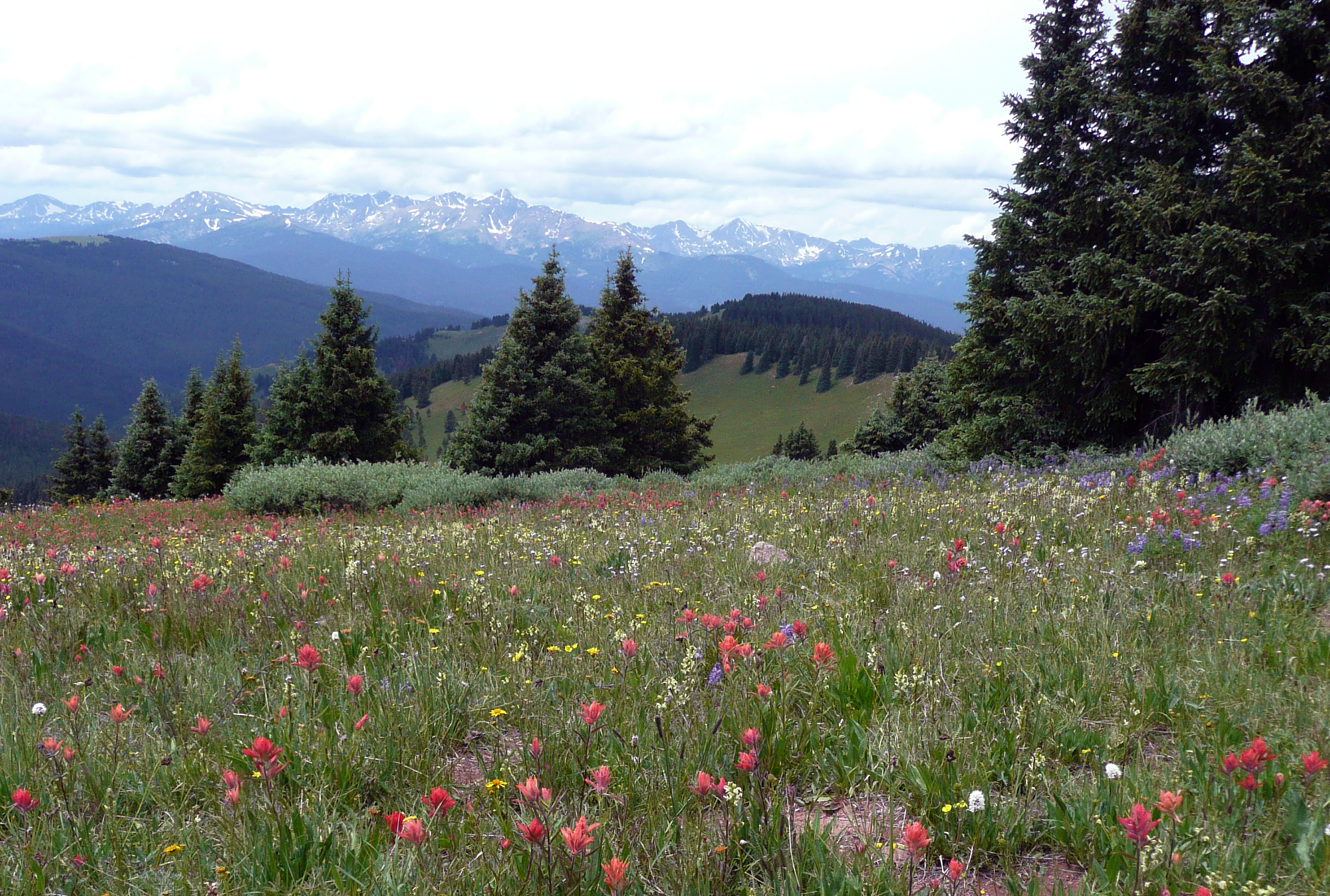
Welcome to the McCain Lab
Department of Ecology & Evolutionary Biology
Museum of Natural History
University of Colorado Boulder
We use mountains as natural experiments to study biodiversity, ecological theory, global change, montane ecology, and range limits.
We love the world's biological wonders and our research encompasses many types of organisms from mammals and carrion beetles to lichens.
Who are we?
PI: Dr. Christy M. McCain (she/her)

Professor & Curator of Vertebrates
Dept. of Ecology & Evolutionary Biology
CU Natural History Museum
Campus Box 265 UCB, University of Colorado, Boulder, CO 80309
303-735-1016
christy.mccain@colorado.edu
Current Students, Staff & Researchers
Patricia Marquez (she/her)

Masters Student
Museum & Field Studies Program, CU Natural History Museum
patricia.marquez@colorado.edu
Research Interests: Collections management
Nadia Alhassani (she/her)

PhD Student (starting Fall 2025)
Ecology & Evolutionary Biology
nadia.alhassani@colorado.edu
Research Interests: community ecology, species interactions, climate change, mountain biodiversity & conservation
Everett Barthels (he/him)

Masters Student (starting Fall 2025)
Museum & Field Studies Program, CU Natural History Museum
everett.barthels@colorado.edu
Research Interests: Collections management
Kadin Bombard (they, them)

Masters Student (starting Fall 2025)
Museum & Field Studies Program, CU Natural History Museum
kadin.bombard@colorado.edu
Research Interests: Collections management
Kira O'Hare (she/her)

Masters Student (starting Fall 2025)
Ecology & Evolutionary Biology
Research Interests: mountain biodiversity, thermal physiology, and climate change
Brandon Stup (he/him)

Undergraduate Student
Ecology & Evolutionary Biology
Research Interests: Large-scale ecology & biodiversity
Emily Braker (she/her)

Vertebrates Collection Manager
CU Natural History Museum
emily.braker@colorado.edu
303-492-8466
Interests: Collections management, biodiversity data structure
Hazel McCain

Lab Mascot
Interests: all smells and mammals, particularly canids, homo sapiens, and chipmunks
Past Students & Researchers
Genevieve Anderegg

Masters in Museum Studies 2022
Current Position: Assistant Collection Manager, Denver Museum of Nature & Science
Anna Chinn

Masters in Museum Studies 2018
Current Position: Collection Manager Birds & Mammals, Royal BC Museum
Dr. Chloe Garfinkel

PhD in Ecology & Evolutionary Biology 2023
Current Position: Teaching Assistant Professor, University of Maryland
Garret Jolma

Masters in Museum Studies 2023
Co-advised w/ Deane Bowers
Current Position: TBD
Dr. Kevin B. Knight

PhD in Ecology & Evolutionary Biology 2017
Current Position: Senior GIS Specialist, Boulder County
Jessica Mailhot

Masters in Museum Studies 2020
Current Position: Collections Assistant, Milwaukee Public Museum; lead on CollViz, an exploration of data viusalization for museums.
Austin Nash

Master's in Ecology & Evolutionary Biology 2022
Current Position: Quantitative Ecologist, USGS
Cameron Pittman

Masters in Museum Studies 2023
Co-advised w/ Jingchun Li
Assistant Collection Manager, Denver Museum of Nature & Science
Dr. Tim Szewczyk
PhD in Ecology & Evolutionary Biology 2017
Current Position: Ecological Modeller, Scottish Association for Marine Science
Dr. Grant Vagle

PhD in Ecology & Evolutionary Biology & IQBio 2023
Current Position: Postdoc University of Minnesota
More Previous Students & Research Assistants
Tara Menne, Museum and Field Studies Certificate Student 2010-2014
Hayden Gardner, EBIO Undergraduate Student, Honors Student (Magna Cum Laude), Research Assistant 2010-2012
John Hackemer, EBIO Undergraduate Student, Honors Student (Magna Cum Laude), Research Assistant 2010-2012
Emma Shubin, EBIO & Music Undergraduate Student, Honors Student (Magna Cum Laude), Research Assistant 2011-2013
Daniela Ramos, EBIO Undergraduate Student, Honors Student (Cum Laude), Research Assistant 2011-2013
Benjamin Shipley, EBIO-Geography Undergraduate Student, Honors Student (Summa Cum Laude) 2017-2018
Richard Dyer, Math-Computer Science BA-MA Student, Independent Research, 2017-2018
Richard Parkhill, EBIO Undergraduate Student, Independent Research, Research Assistant 2010-2012
Holly D'Oench, EBIO Undergraduate Student, Independent Research, Research Assistant 2012-2016
Emily Monk, EBIO Undergraduate Student, Independent UROP Research 2015
Tyler Streb, EBIO Undergraduate Student, Independent UROP Research, Research Assistant 2016-2017
Lauren Kramer, EBIO graduate, Research Assistant 2018
Kathryn Feldmann, EBIO Undergraduate Student, Research Assistant 2016-2017, 2018
Angela Knerl, EBIO Undergraduate Student, Research Assistant 2010-2014
Will Winship, EBIO Undergraduate Student, Research Assistant 2011
Mark McGregor, EBIO Undergraduate Student, Research Assistant 2008-2009
Helen Van Damm, EBIO Undergraduate Student, Research Assistant 2008
Brian Heinold, Research Assistant 2016
Heather Taylor-Smith, Research Assistant 2011-2013
Sadie Yurista, Research Assistant 2012-2013
Mike Schmidtke, Research Assistant 2012
Jake Harris, Research Assistant 2010-2012
Justin Bondensen, Research Assistant 2012
Alisha Wainwright, Research Assistant 2011
Cullen Dembowski, Research Assistant 2010
Heather Hansen, Research Assistant 2009-2010
Justin Freeman, Research Assistant 2010
Previous Postdocs & Researchers
Dr. Sarah King, Postdoctoral Researcher 2010-2013
Dr. Kevin Hinson, Postdoctoral Researcher 2015
Andy Hicks, Entomological Researcher 2015-2023
Dr. Julio Lemos-Espinal, Sabbatical Fellow from UNAM 2023-2024
Research
We use mountains as natural experiments to study biodiversity, ecological theory, global change, montane ecology, and range limits. We love the world's biological wonders and our research encompasses many types of organisms with an emphasis on mammals and insects. Our overarching goal is to contribute to the development of quantitative and testable theories applicable to both the advancement of ecology and the improvement of conservation strategies.
Our current research program has four primary foci:

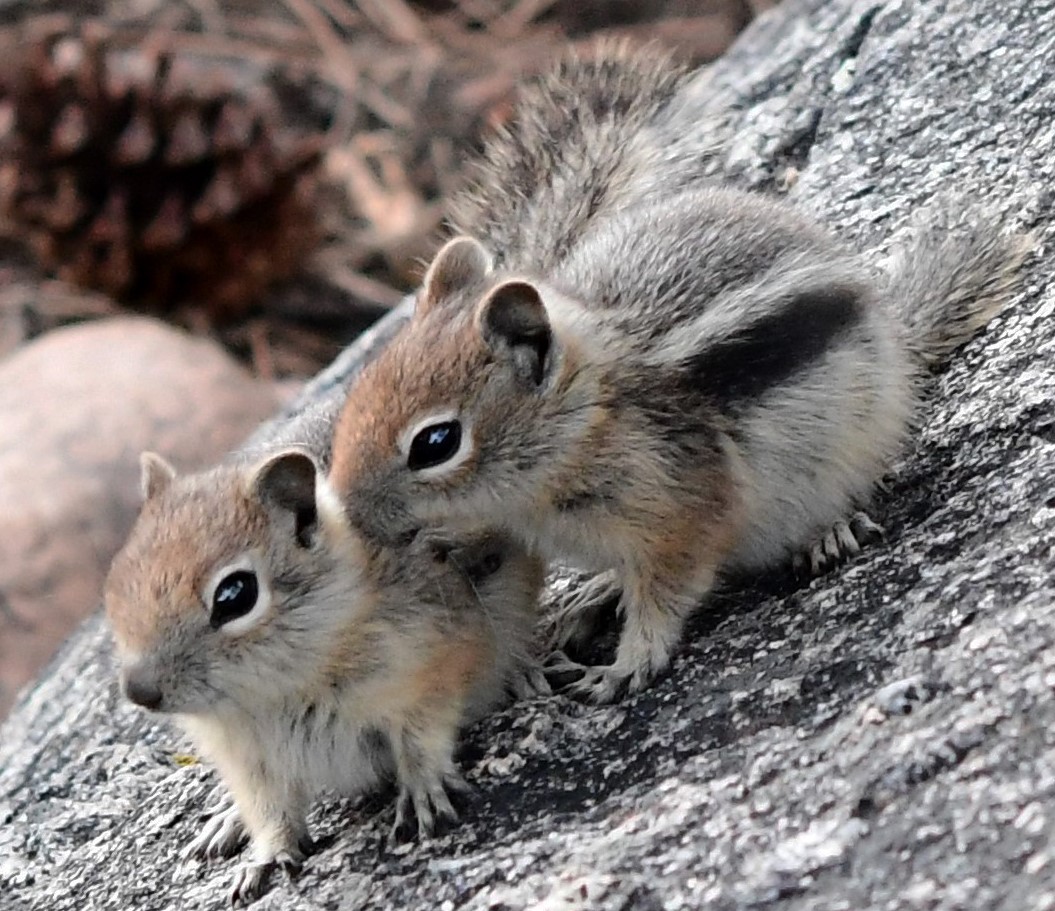
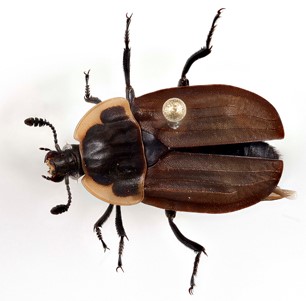
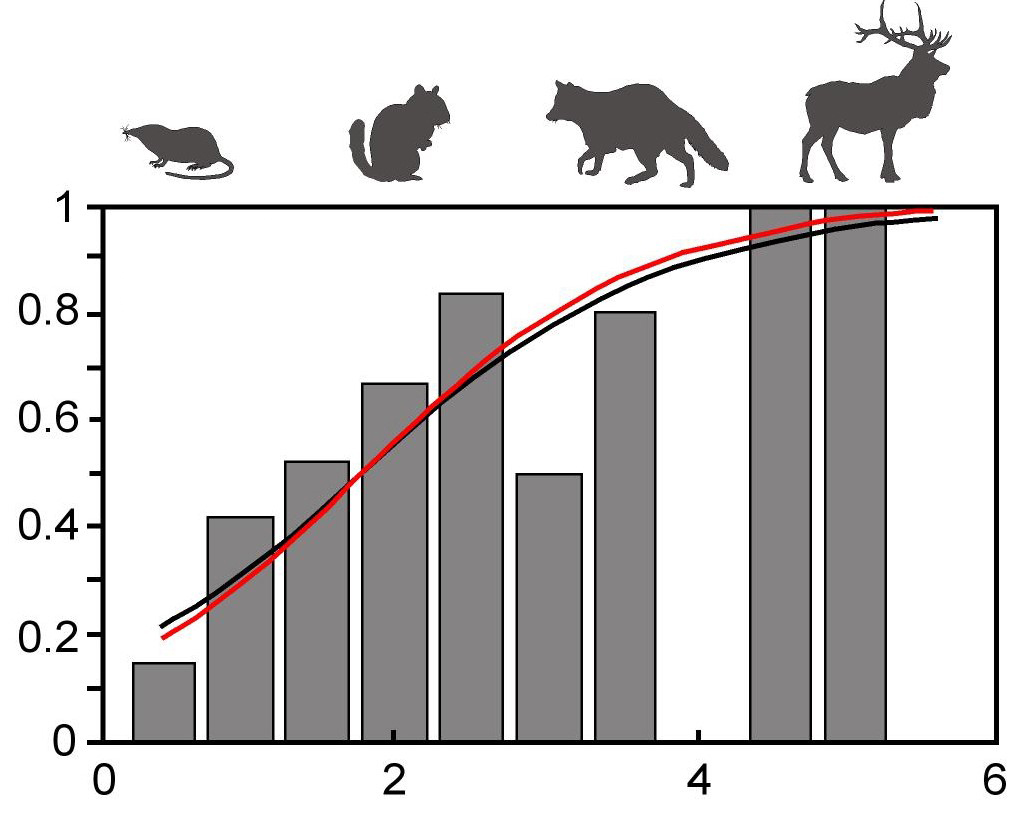
Mountain Mammal Carrion Beetle Ecological
Biodiversity, Biodiversity, Ecology, Theory
Conservation Climate Range Limits
Change
Global Mountain Biodiversity & Conservation

Mountains are hotspots of biodiversity, harboring the majority of the world's rare, endangered, and endemic species. When I began studying elevational diversity in the late 1990s, the paradigm was diversity decreased as elevation increased regardless of taxa. But it has become abundantly apparent from empirical studies and meta-analyses of the best sampled elevational gradients across the world that (1) there are a variety of elevational diversity patterns; (2) maximum diversity at middle elevations is the most common pattern, which is particularly uniform in certain clades of vertebrates and insects; (3) much of this variation is best described by contemporary climate based on multivariate tests of theory; and, importantly, (4) these patterns are directly tied to the underlying and distinct physiological and ecological niches of each clade (Fig. 1). This compiled series of global elevational gradients is a wealth of information on which we continue to build quantitative theory and explore conservation strategies.
Mammal Biodiversity & Climate Change

Our studies of mammalian distributions, biodiversity drivers, and climate change response span multiple countries, decades, and elevational gradients. One long term study, "Diversity and Climate Change: using elevational gradients to uncover processes underlying mammalian species distributions." (McCain: NSF DEB 0949601), involves trapping mammals along four elevational gradients in Colorado at 32 sites to assess current distributions and population sizes and compare these to historical distributions. The main thrusts are two fold--(1) assess the upward elevational shifts due to anthropogenic climate change on mammal distributions in the southern Rocky Mountains (Fig. 3a; McCain et al. 2021), and (2) detect the direct (e.g., physiological) versus indirect (e.g.,food resources) impacts of climate variables on mammalian diversity and distributions. Other mammal projects include contrasting mammalian body size and microhabitat use for differential climate change responses (Fig. 3b; McCain & King 2016) as well as climate change responses in various ground squirrels, including Wyoming ground squirrels (Urocitellus elegans) and Golden-mantled ground squirrels (Callospermophilus lateralis).
Carrion Beetle Ecology & Range Limits:

Our lab has been assessing the diversity, abundance and distributional patterns of ants, beetles, grasshoppers, bees & wasps, and centipedes & millipedes from the Colorado Rocky Mountains with collaboration from many entomologists and invertebrate biologists. In particular, carrion beetles (Silphidae) are a focal group of study due to their impressive trait variation and contrasting biology between the two subfamilies (Silphinae & Nicrophorinae; Fig. 4). Our lab has conducted various studies on local carrion beetles since 2010, including elevational distributions, habitat use, thermal tolerance, desiccation tolerance, and population dynamics. In particular, we are interested in the importance of species traits, including physiological, in setting elevational range limits, underlying biodiversity patterns, and predicting responses to climate change.
If you are interested in the carrion beetles of Colorado and the surrounding states, see our KEY.
Ecological Theory:
Our lab examines various empirical and simulation studies to assess critical characteristics for ecological distributions & diversity, climate change respones and how population dynamics influence larger scale patterns and responses. For example, montane precipitation changes may amplify the extinction risks tenfold compared with the effects of warming alone (McCain & Colwell 2011). Using population simulation models, we detected that the frequency and magnitude of population peaks and troughs greatly impact the accuracy of our climate change response measurements (both overestimating and underestimating responses; McCain et al. 2016). See various publications to read more about our studies examining various ecological theory and its implications for biodiversity, conservation, and climate change responses.
Publications
Google Scholar Profile
Garfinkel, C. F., and C. M. McCain. In press. The role of life stage and season in critical thermal limits of carrion beetles. Journal of Thermal Biology.
Anderegg, G., Bowers, M. D., and C. M. McCain. In press. Ethanol concentration of fluid-preserved insect samples is influenced by time and the ratio of specimen to fluid volume. Collection Forum.
Resasco, J., D. P. Vázquez, C. M. McCain, and S. D. Olson. 2024. Was Clements wrong? Insights from plant distributions of his life-long study site, Pikes Peak. The American Naturalist 204: 533-545. [PDF]
Boggess, L. M., C. M. McCain, E. A. Manzitto-Tripp, S. M. Pearson, and J. C. Lendemer. 2024. Disturbance and diversity: Lichen species richness decreases with increasing anthropogenic disturbance. Biological Conservation 293:110598. [PDF]
Nash, A. L. and C. M. McCain. 2024. A drying climate and habitat area drive extirpations of a southward advancing ground squirrel. Journal of Mammalogy 105: 323-336. [PDF]
Vagle, G.L., Lendemer, J., Manzitto-Tripp, E.A., and McCain, C. M. 2024. Patterns and predictors of lichen rarity in a biodiversity hotspot. Biodiversity and Conservation 33: 1303–1324. [PDF]
Beck, J., McCain, C. M., and G. Brehm. 2024. Can you trust comparative trait data based on singleton species? Frontiers of Biogeography 16: e62354. [PDF]
Lemos-Espinal, J.A., Smith, G.R., and McCain, C. M. 2024. The herpetofauna of the Chihuahuan Desert biogeographic province of Mexico: Diversity, similarity to other provinces, and conservation status. Diversity 16: 771. [PDF]
Garfinkel, C. F., and C. M. McCain. 2023. Substantial niche overlap in carrion beetle habitat and vegetation use. Ecological Entomology 48:433–444. [PDF]
Koch, N.M., Lendemer, J., Manzitto-Tripp, E.A., McCain, C., and D.E. Stanton. 2023. Carbon-concentrating mechanisms are a key trait in lichen ecology and distribution. Ecology e4011. [PDF]
Manzitto-Tripp, E. A., Lendemer, J. C., and McCain, C. M. 2022. Most lichens are rare, and degree of rarity is mediated by lichen traits and biotic partners. Diversity & Distributions 28:1810-1819. [PDF]
McCain, C. M. and Garfinkel, C. 2021. Climate change and elevational range shifts in insects. (Invited paper) Current Opinion in Insect Science 47: 111–118. [PDF]
Montaño-Centellas, F. A., Loiselle, B. A., and McCain, C. M. 2021. Multiple dimensions of bird beta diversity support that mountains are higher in the tropics. Journal of Biogeography 48:2455-2468. [PDF]
McCain, C. M., King, S. R. B., and T. Szewczyk. 2021. Unusually large upward shifts in cold-adapted, montane mammals as temperature warms. Ecology 102: e03300. [PDF]
McCain, C. M. 2021. Another rejection of the more-individuals-hypothesis: Carrion beetles (Silphidae, Coleoptera) in the Southern Rocky Mountains. Frontiers of Biogeography 13: e47013. [PDF]
Beck, J. and McCain, C. M. 2020. Opinion: Just bird food? – On the value of invertebrate macroecology. Frontiers of Biogeography: e47684. [PDF]
Vagle, G.L. and McCain, C. M. 2020. Natural population variability may be masking the more-individuals hypothesis. Ecology: e03035. [PDF]
Montaño-Centellas, F. A., McCain, C. M., and Loiselle, B. A. 2020. Using functional and phylogenetic diversity to infer avian community assembly along elevational gradients. Global Ecology and Biogeography 29: 232–245. [PDF]
McCain, C. M. 2019. Assessing the risks to United States and Canadian mammals caused by climate change using a trait-mediated model. Journal of Mammalogy 100: 1808–1817. [PDF]
Szewczyk, T. and McCain, C. M. 2019. Disentangling elevational richness: A multi-scale hierarchical Bayesian occupancy model of Colorado ant communities. Ecography 42: 977–988. [PDF]
Bärtschi, F., McCain, C. M., Ballesteros-Mejia, L., Kitching, I. J., Beerli, N. and Beck, J. 2019. Elevational richness patterns of sphingid moths support area effects over climatic drivers in a near-global analysis. Global Ecology & Biogeography 28: 917–927. [PDF]
Tripp, E. A., Lendemer, J. C., and McCain, C. M. 2019. Habitat quality and disturbance drive lichen species richness in a temperate biodiversity hotspot. Oecologia 190: 445–457. [PDF]
Lendemer, J.C., Keepers, E.A. Tripp, Pogoda, C., McCain, C.M., Kane, N.C. 2019. A taxonomically broad metagenomic survey of 339 species spanning 57 families suggests cystobasidiomycete yeasts are not ubiquitous across all lichens. American Journal of Botany 106: 1090–1095. [PDF]
Keepers, K.G., Pogoda, C.S., White, K.H., Anderson Stewart, C.R., Hoffman, J.M., Ruiz, A.M., McCain, C.M., Lendemer, J. C., Kane, N.C., and Tripp, E.A. 2019. Whole genome shotgun sequencing detects greater lichen fungal diversity than amplicon-based methods in environmental samples. Frontiers of Ecology & Evolution 7: 1–14. [PDF]
Tripp, E. A., Morse, C.A, Keepers, K., Anderson Stewart, C., Pogoda, C., White, K. H., Hoffman, J. R., Kane, N.C., and McCain, C.M. 2019. Evidence of substrate endemism of lichens on Fox Hills Sandstone: Discovery and description of Lecanora lendemeri as new to science. The Bryologist 122: 246–259. [PDF]
McCain, C. M., King, S.R.B, Szewczyk, T*, and Beck, J. 2018. Small mammal species richness is directly linked to regional productivity, but decoupled from food resources, abundance, or habitat complexity. Journal of Biogeography 45: 2533-2545 & Cover. [PDF]
Beck, J., Takano, H., Ballesteros-Mejia, L., Kitching, I. J., and McCain, C. M. 2018. Field sampling is biased against small-ranged species of high conservation value: A case study on the Sphingid moths of East Africa. Biodiversity and Conservation 27: 3533-3544. [PDF]
Anderson Stewart, C., Lendemer, J.C., Keepers, K., Pogoda, C., McCain, C.M., Kane, N.C. and E.A. Tripp. 2018. Lecanora markjohnstonii (Lecanoraceae, lichenized Ascoymcetes), a new sorediate crustose lichen from the southeastern United States. The Bryologist 121: 498-512. [PDF]
Beck, J., Rudlinger, C. M. and McCain, C. M. 2017. Is the ecological belt zonation of the Swiss Alps relevant for moth diversity and turnover? Acta Oecologia 80: 1-7. [PDF]
Beck, J., McCain, C. M., Axmacher, J.C., Ashton, L.A., Bartschi, F., Brehm, G., Choi, S.-W., Cizek, O., Colwell, R.K., Fiedler, K., Francois, C.L., Highland, S., Holloway, J.D., Intachat, J., Kadlec, T., Kitching, R.L., Maunsell, S.C., Merckx, T., Nakamura, A., Odell, E., Sang, W., Toko, P.S., Zamecnik, J., Zou, Y. & Novotny, V. 2017. Elevational species richness gradients in a hyperdiverse insect taxon: a global meta-study on geometrid moths. Global Ecology and Biogeography 26: 412-424. [PDF]
Colwell, R.K., Gotelli, N.J., Ashtone, L.A., Beck, J., Brehm, G., Fayle, T.M., Fiedler, K., Forister, M.L., Kessler, M., Kitching, R.L., Klimes, P., Kluge, J., Longino, J. T., Maunselle, S.C., McCain, C.M., Moses, J., Noben, S., Sam, K., Sam, L, Shapiro, A.M., Wang, X. and V. Novotny. 2016. Midpoint attractors and species richness: Modeling the interaction between environmental drivers and geometric constraints. Ecology Letters 19: 1009-1022. [PDF]
Szewczyk, T.* and McCain, C. M. 2016. A systematic review of global drivers of ant elevational diversity. PlosONE 10: e0155404. [PDF]
McCain, C. M., Szewczyk, T.*, K. Bracy Knight*. 2016. Population variability complicates the accurate detection of climate change responses. Global Change Biology 22: 2081-2093. [PDF]
McCain, C. M. and J. Beck. 2016. Species turnover in vertebrate communities along elevational gradients is idiosyncratic and unrelated to species richness. Global Ecology and Biogeography 25: 299-310. [PDF]
King, S. R. B. and McCain, C. M. 2015. Reithrodontomys megalotis and R. montanus can be robustly discriminated using cranial osteology and external characteristics within age classes. Proceedings of the Biological Society of Washington 128: 1-10. [PDF]
McCain, C. M. and S. R. B. King. 2014. Body size and activity times mediate mammalian responses to climate change. Global Change Biology 20: 1760-1769. [PDF]
Botero, C.A., Dor, R. McCain, C.M., and Safran, R.J. 2014. Environmental harshness is positively correlated with intraspecific divergence in mammals and birds. Molecular Ecology 23: 259-268. [PDF]
Graham, C. H., A. C. Carnaval, C. D. Cadena, K. R. Zamudio, T. E. Roberts, J. L. Parra, C. M. McCain, R. C. K. Bowie, C. Moritz, S. B. Baines, C. J. Schneider, J. VanDerWal, C. Rahbek, K. H. Kozak, and N. J. Sanders. 2014. The origin and maintenance of montane biodiversity: integrating evolutionary and ecological processes. Ecography 37: 711-719. [PDF]
Gaston, K. J., McCain, C. M., and Lyons, S. K. 2014. Abundance and Distributions. Pages 400-402 in Foundations of Macroecology (eds. Smith, F. A., Gittleman, J. L. and Brown, J. H.). University of Chicago Press.
McCain, C. M. 2014. Introduction to Geographic ranges of North American terrestrial mammals (Anderson 1977). Page 416 in Foundations of Macroecology (eds. Smith, F. A., Gittleman, J. L. and Brown, J. H.). University of Chicago Press.
McCain, C. M. 2014. Introduction to The latitudinal spans of seaweed species and their patterns of overlap (Pielou 1977). Page 465 in Foundations of Macroecology (eds. Smith, F. A., Gittleman, J. L. and Brown, J. H.). University of Chicago Press.
McCain, C. M. 2014. Introduction to On the relationship between abundance and distribution of species (Brown 1984). Page 509 in Foundations of Macroecology (eds. Smith, F. A., Gittleman, J. L. and Brown, J. H.). University of Chicago Press.
McCain, C. M. and K. Bracy Knight.* 2013. Is Rapoport's Rule pervasive on mountains? Global Ecology and Biogeography 22: 750-759. [PDF]
Hawkins, B.A. McCain, C.M., Davies, T.J., Ackerly, D.D., Anacker, B., Buckley, L.B., Cornell, H.V., Damschen, E.I., Grytnes, J.-V., Harrison, S.P., Kraft, N.J.B., and Stephens, P.R. 2012. Different evolutionary histories underlie congruent species richness gradients of birds and mammals. Journal of Biogeography 9:825-841. [PDF]
Cadena, C.D., Kozak, K.H., Gomez, J.P., Parra, J.L., McCain, C.M., Bowie, R.C.K., Carnaval, A.C., Moritz, C., Rahbek, C., Roberts, T., Sanders, N., Schneider, C., VanDerWal, J., Zamudio, K., and Graham, C.H. 2012. Latitude, elevational climatic zonation, and speciation in New World vertebrates. Proceedings of the Royal Society B-Biological Sciences 279:194-201. [PDF]
McCain, C. M. and R. K. Colwell. 2011. Assessing the threat to montane biodiversity from discordant shifts in temperature and precipitation in a changing climate. Ecology Letters 14:1236-1245. [PDF]
Fierer, N., McCain, C. M., Meir, P., Zimmerman, M., Rapp, J. M., Silman, M. R., and Knight, R. 2011. Microbial elevational diversity does not follow the biogeographical trends of plants and animals. Ecology 92: 797-804. [PDF]
McCain, C. M. 2010. Global analysis of reptile elevational diversity. Global Ecology and Biogeography 19:541-553. [PDF]
McCain, C. M., and N. J. Sanders. 2010. Metabolic theory and elevational diversity of vertebrate ectotherms. Ecology 91:601-609. [PDF]
McCain, C. M. and J. A. Grytnes. 2010. Elevational gradients in species richness. Encyclopedia of Life Sciences, John Wiley & Sons, Inc.; 13 pp. [Invited & Peer-reviewed] [PDF]
Buckley, L.B., Davies, T.J., Ackerly, D.D., Kraft , N.J.B., Harrison, S.P., Anacker, B., Cornell, H.V., Damschen, E.I., Grytnes, J.-V., Hawkins, B.A. McCain, C.M., Stephens, P.R. and Wiens, J.J. 2010. Mammalian climate-diversity gradients: An inevitable product of aggregating clades with distinct evolutionary histories? Proceedings of the Royal Society of London 277:2131-2138. [PDF]
Smith, F.A., Boyer, A.G., Brown, J.H., Costa, D.P., Dayan, T., Ernest, S.K.M., Evans, A.R., Fortelius, M., Gittleman, J.L., Hamilton, M.J., Harding, L.E., Lintulaakso, K., Lyons, S.K., McCain, C.M., Okie, J.G., Saarinen, J.J., Sibly, R.M., Stephens, P.R., Theodor, J., and M.D. Uhen. 2010. The evolution of maximum body size in terrestrial mammals. Science 330:1216-1219. [PDF]
Wiens, J.J, Ackerly, D.D., Allen, A.P., Anacker, B.L., Buckley, L.B., Cornell, H.V., Damschen, E.I. Davies, T.J., Grytnes, J.-A., Harrison, S.P., Hawkins, B.A., Holt, R.D., McCain, C.M. & Stephens, P.R. 2010. Niche conservatism as an emerging principle in ecology and conservation biology. Ecology Letters 13:1310-1324. [PDF]
McCain, C. M. 2009. Vertebrate range sizes indicate that mountains may be 'higher' in the tropics. Ecology Letters 12:550-560. (Recommended in Faculty of 1000) [PDF]
McCain, C. M. 2009. Global analysis of bird elevational diversity. Global Ecology and Biogeography 18:346-360. [PDF]
Gotelli, N.J., Anderson, M.J., Arita, H.T., Chao, A., Colwell, R.K. Connolly, S.R. Currie, D.J. Dunn, R.R., Graves, G.R. Green, J.L., Grytnes, J-A., Jiang, Y.-H., Jetz, W., Lyons, S.K., McCain, C.M., Magurran, A.E., Rahbek, C., Rangel, T.F.L.V.B., Soberon, J., Webb, C.O., and M.R. Willig. 2009. Patterns and causes of species richness: a general simulation model for macroecology. Ecology Letters 12: 873-886. [PDF]
McCain, C. M. 2007. Area and mammalian elevational diversity. Ecology 88:76-86. [PDF]
McCain, C. M. 2007. Could temperature and water availability drive elevational diversity? A global case study for bats. Global Ecology and Biogeography 16:1-13 & Cover. [PDF]
Dunn, R. R., C. M. McCain, and N. J. Sanders. 2007. When does diversity fit null model predictions? Scale and range size mediate the mid-domain effect. Global Ecology and Biogeography 16:305-312. [PDF]
Mittelbach, G.G., D. Schemske, H.V. Cornell, A.P. Allen, J. Brown, M. Bush, S.P. Harrison, A. Hurlbert, N. Knowlton, H.A. Lessios, C. M. McCain, A.R. McCune, L.A. McDade, M.A. McPeek, T.J. Near, T.D. Price, R.E. Ricklefs, K. Roy, D.F. Sax, D. Schluter, J. M. Sobel, and M. Turelli. 2007. Evolution and the latitudinal diversity gradient: speciation, extinction, and biogeography. Ecology Letters 10:315-331. [PDF]
Grytnes, J. A. and C. M. McCain. 2007. Elevational trends in biodiversity. Pages 1-8 in Encyclopedia of Biodiversity (S. Levin, editor), Elsevier, Inc. [Invited & Peer-reviewed]. [PDF]
McCain, C. M., R. M. Timm, and M. Weksler. 2007. Sigmodontomys aphrastus: Redescription, taxonomic comparison, and natural history. Proceedings of the Biological Society of Washington 120:117-136. [PDF]
McCain, C. M. 2006. Do elevational range size, abundance, and body size patterns mirror those documented for geographic ranges? A case study using Costa Rican rodents. Evolutionary Ecology Research 8:435-454. [PDF]
McCain, C. M. 2005. Elevational gradients in diversity of small mammals. Ecology 86:366-372. [PDF]
McCain, C. M. 2004. The mid-domain effect applied to elevational gradients: species richness of small mammals in Costa Rica. Journal of Biogeography 31:19-31. [PDF]
McCain, C. M. 2003. North American desert rodents: a test of the mid-domain effect in species richness. Journal of Mammalogy 84:967-980. [PDF]
McCain, C. M. 2001. First evidence of giant anteaters (Myrmecophaga tridactyla) in Honduras. Southwestern Naturalist 46:252-254. [PDF]
Classes
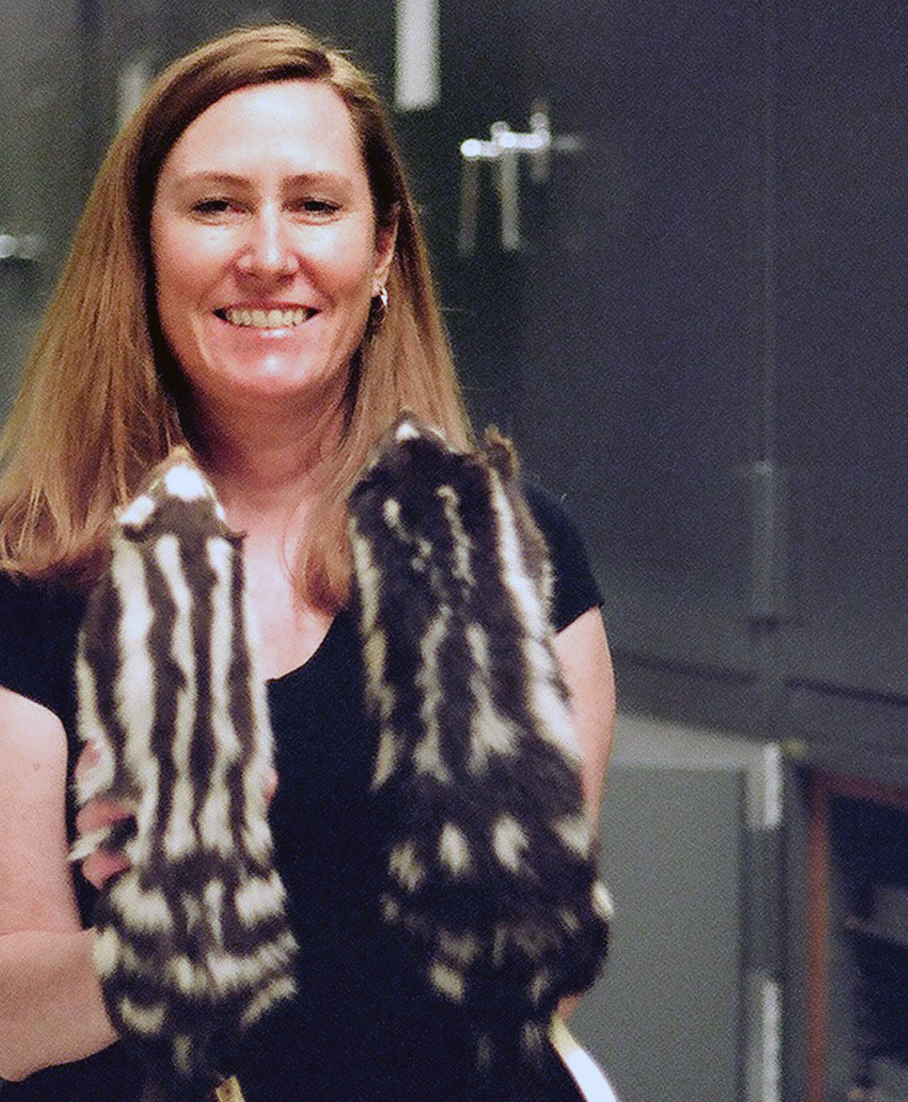
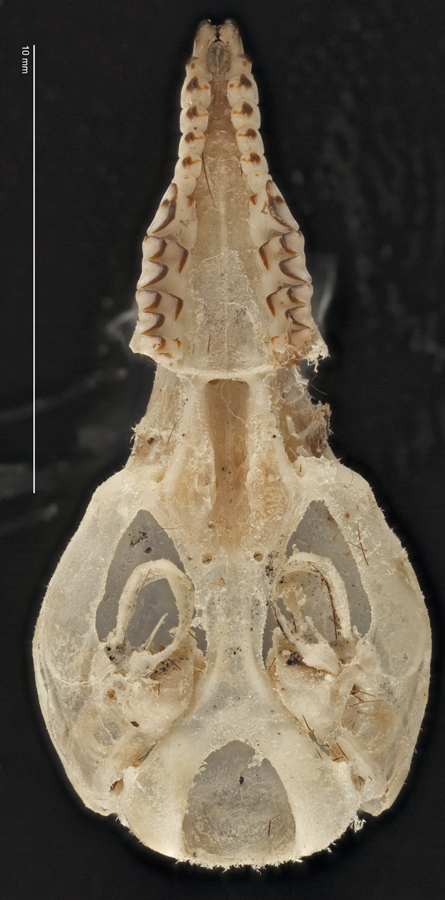
Mammalogy (EBIO 4760/5760; MUSM 5760)
Taught in Fall: next in Fall 2025
Older Syllabus & Schedule (2023)
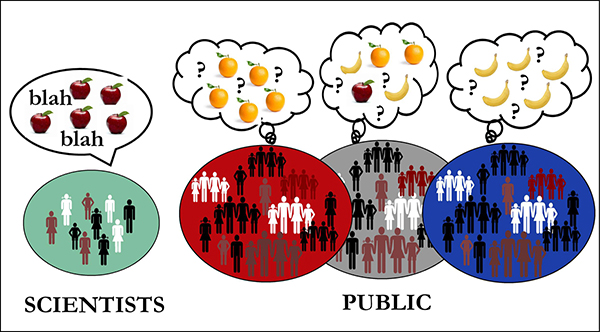
Creative Conservation Messaging (EBIO 6100/MUSM 6110)
Taught next: TBD
2014: focus on artist's presentations & inspiration
Syllabus & Schedule (2014), and
Participant Artist Flyer
2018 & 2019: focus on practicing conservation messaging across the political spectrum
Syllabus & Schedule (2019)
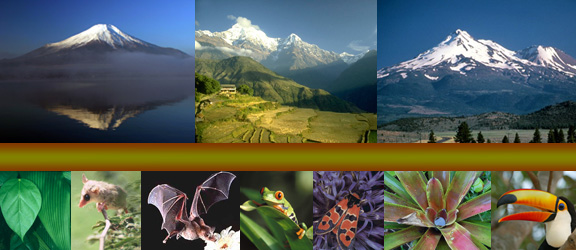
Mountain Ecology & Conservation (EBIO 3170)
Taught next: TBD
Syllabus & Schedule (2014)
Other Previous Classes: Field Methods in Zoology & Botany (MUSM 5795, EBIO 4795/5795, & ENVS 4795); Biogeography: Foundations & Frontiers (grad seminar: EBIO 6100)
Want to Join the Lab?
The McCain Lab is dedicated to including and encouraging participation of all peoples across genders, ethnicities, cultures, religions, physical abilities, ages, sexual orientations, political viewpoints, and gender identities.
Graduate Students
Motivated and enthusiastic graduate students are always welcome to contact us about joining the lab to pursue either a Masters or a Doctoral degree in the Department of Ecology and Evolutionary Biology (EBIO) or the Museum & Field Studies Program (MFS). I encourage students to pursue research ideas related to mine on any taxonomic group. Please see my research and publications for specifics on my research interests.
I think success in graduate school is dependent on both developed skills and intangibles. Some necessary skills are logical thinking, quantitative ability, intellectual creativity, hard work, and independence. Intangibles include excitement about biology, dogged determination, and taking joy from biological beauty.
Support is available in the form of fellowships and teaching, curatorial and research assistantships, but all students applying to work with me are encouraged to apply for outside funding (e.g. NSF pre-doctoral fellowships). Our lab uses Individualized Mentoring Agreements, which gives you an idea of my mentoring style and expectations of graduate students.
If interested, please email me a CV including GPA, a brief statement of research interests & academic goals (~1 page), and contact information for three references. Competition for graduate positions in my lab is keen as I usually receive 20-40 applicants per year and can only have 2-4 students in the lab per year. It is useful to be knowledable about the graduate school application process upfront: see online resources. The EBIO application deadline is Dec. 1st, for more information visit our Graduate website. The MFS deadline is Jan. 15th, for more information visit the MFS website. These deadlines vary for international students and sometimes change year to year, so please check the admissions websites carefully. There is also funding for a weekend visit and graduate application training for interested applicants from underrepresented groups in the sciences, see the ColoradoAdvantage program, and the deadline for that program is usually in early fall.
Undergraduate Students
CU offers several opportunities for undergraduate research funding, I encourage all undergraduates interested in research to apply for these grants and fellowships.
We often have opportunities helping in the lab on the elevational diversity of Rocky Mountain insects, but currently these are only volunteer positions. For our summer mammal trapping, we also take motivated volunteers as well as applicants for paid positions.
If you are looking for research experience, there are opportunities for independent projects and honors theses. I have preference for students who have taken my classes, since we have already interacted extensively. Regardless, if you have an research idea you would like to pursue, please email me and include a description of your project idea, your resume with classes, grades, and research experience. Be aware that I do not supervise honors theses for projects for which the data have already been collected (e.g., in a study abroad program).
Vertebrate Collection
CU Museum of Natural History
See our Museum website for more detailed information about collections, loans, policies, and questions.
All vertebrate data are publically available on ARCTOS and GBIF
122,787 specimens total
Amphibians & Reptiles: 65,744 specimens
Birds: 14,519 specimens
Fishes: 25,518 specimens (~2272 lots)
Mammals: 17,006 specimens
Vertebrates Staff
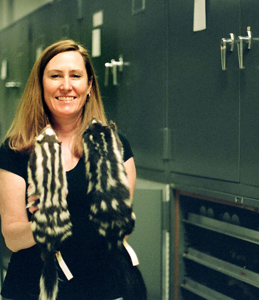
Christy McCain (she/her)
Curator
303-735-1016
christy.mccain@colorado.edu

Emily Braker (she/her)
Collection Manager
303-492-8466
emily.braker@colorado.edu
Simulation Programs
Computer coding for testing various diversity & distribution hypotheses
Our lab uses a diversity of quantitative, simulations, and statistical methods to test our theoretical and empirical hypotheses. Some of those mini-programs we built to run in Excel using Visual Basic, and have made available for other's use. Unfortunately, we do not have the staff to continually update these for each new version of Excel. So they might not always work for every computer and set of software.
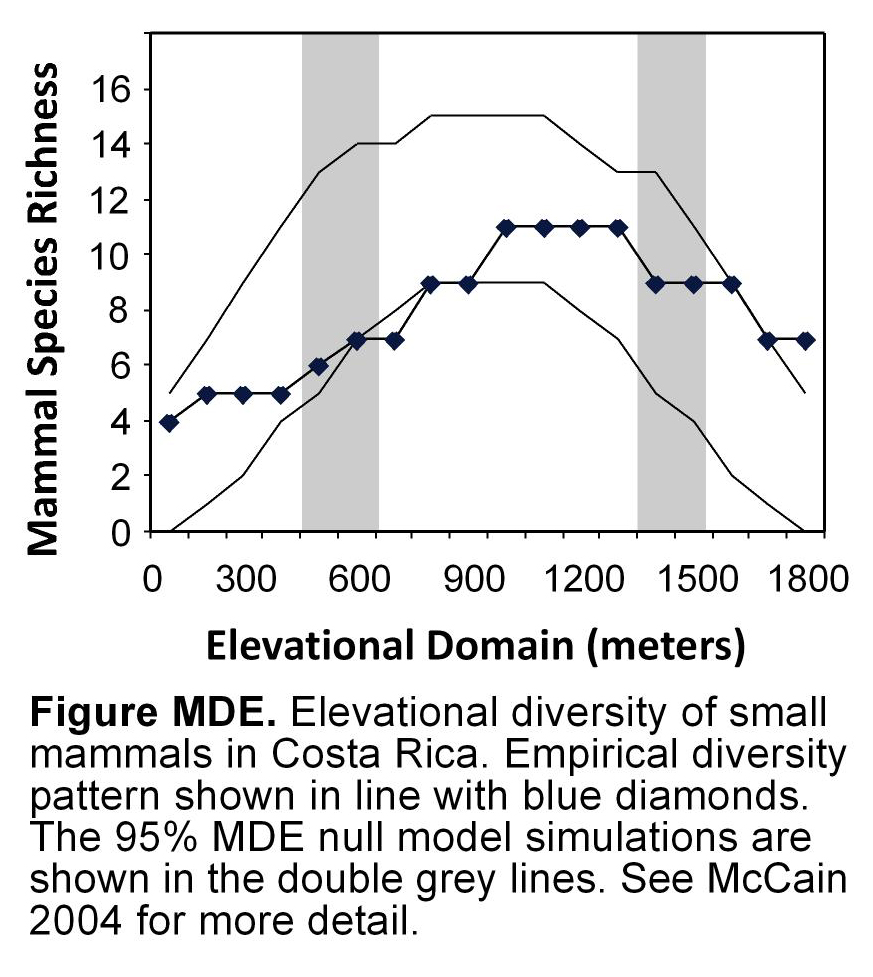
Mid-Domain Null
I developed a program for generating null model predictions for empirical diversity patterns called Mid-Domain Null, a Monte Carlo simulation procedure, which I wrote in Visual Basic for Excel (McCain 2004). This program simulates species richness curves based on empirical range sizes or range midpoints within a bounded domain based on the analytical-stochastic models of Colwell (1999) and Colwell & Hurtt (1994). Mid-Domain Null allows for sampling with or without replacement from empirical range sizes or midpoints. The program is designed to run thousands of Monte Carlo simulations in a single session and offers various outputs including species richness curves, 95% simulation prediction curves, randomized data, among others. The program and accessory files are downloadable here: Mid-Domain Null add-on, help file, sample.
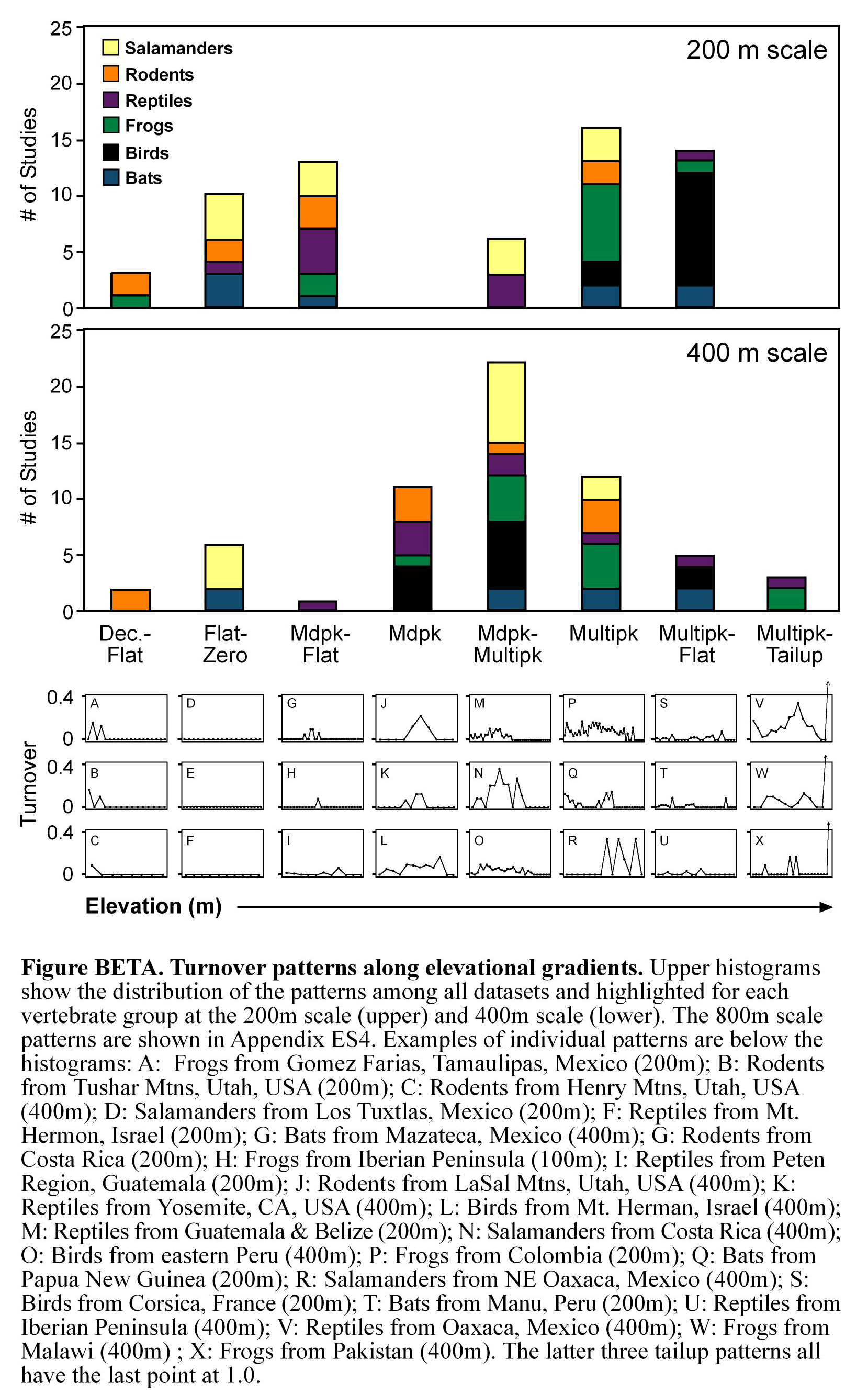
Beta Simulations
I developed a program for three null model simulations (hard boundaries, soft boundaries and no boundaries) for turnover simulations. This was written in Visual Basic for Excel for a paper with Jan Beck (McCain & Beck 2016). To download the program as an Excel spreadsheet with functional module button, click here. The program works very similarly to the Mid-domain Null program, so see the help file and sample above.
